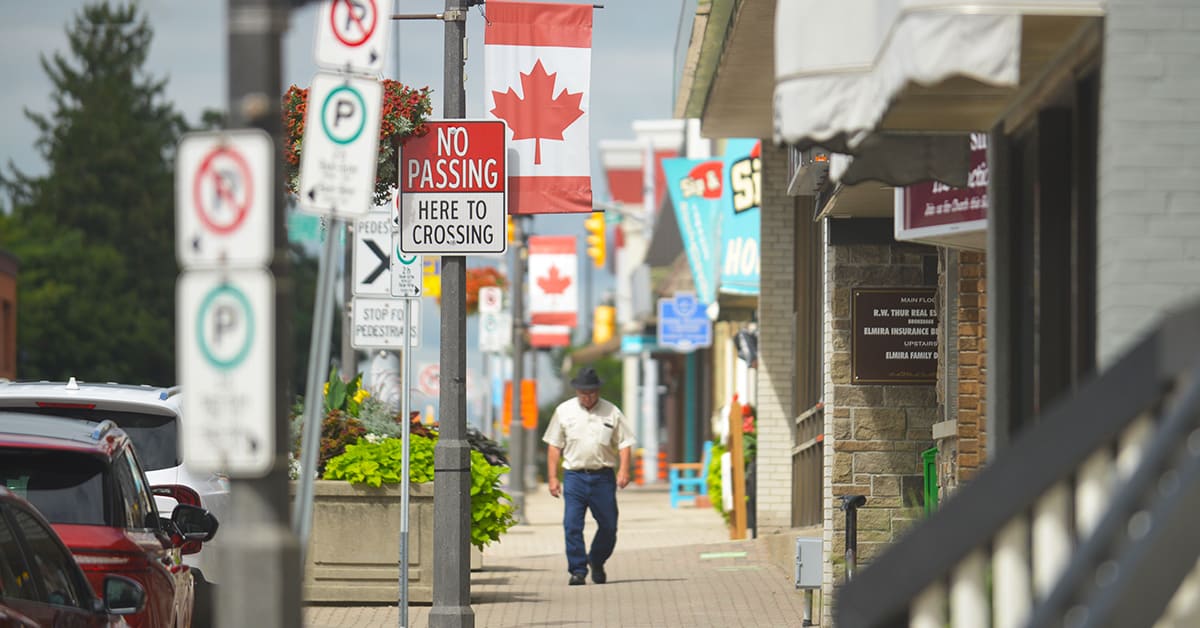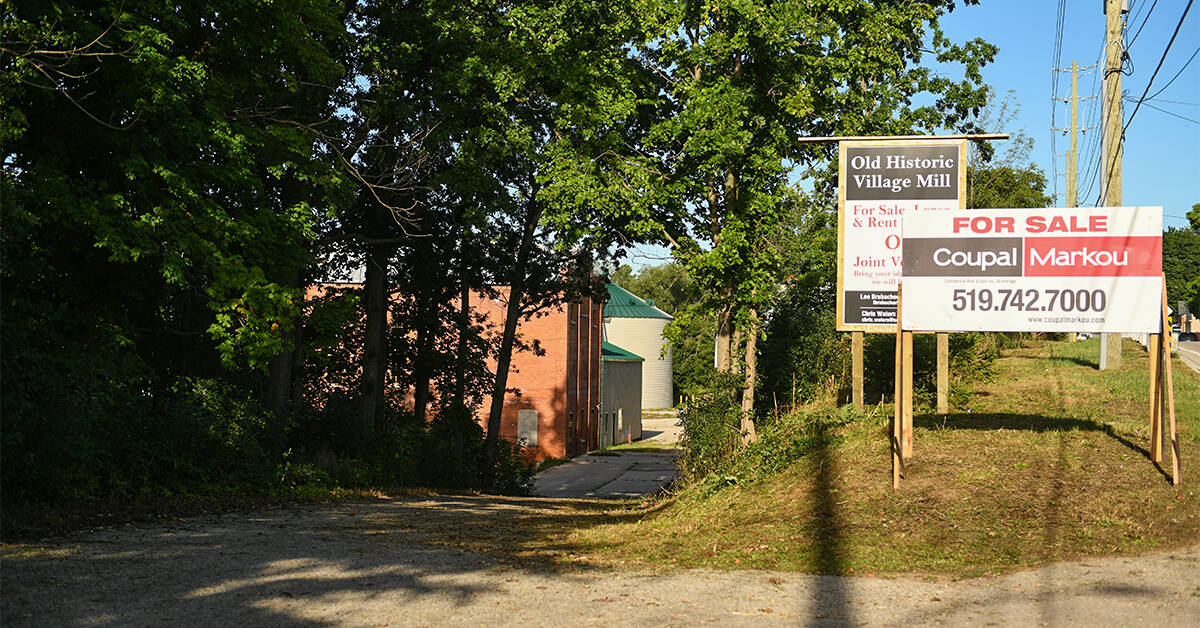An overhaul of Elmira’s downtown has taken another small step forward. The final report of Elmira’s core urban design study was released last week ahead of a council discussion later this month.
The plan developed by Toronto-based consultants The Planning Partnership encompasses the area of Elmira from approximately Centre Street to Dunke Street and from Riverside Drive to South Street. While this is a long term-plan, there’s no firm timeline for implementing the suggestions, which was intentional, says Woolwich’s director of development services, Deanne Friess.
“The Arthur Street reconstruction that the region is working on next year will be the first thing that we’ll focus on for this plan so that we can time it at the same time as the road is going to be torn up. Then we can also do improvements to that area aligned with this plan. Other than that, we will introduce different budget elements each year to the council and see what council wants to support doing depending on that year,” Friess explained.
“It will take time to implement all these suggestions, but you have to have a plan in place in order to start somewhere. So even if it changes and evolves over time, this gives us something to work towards,” she said.
Most of the area in the plan is zoned for commercial use, however the study suggest having a mix of residential and commercial buildings in the downtown core, including buildings that would include both.
“The township should consider a more comprehensive commitment to establishing the core area as a fully mixed-use district. Permission for a range of residential dwellings in townhouse and apartment built forms should be considered. The promotion of mixed-use and live-work buildings should be considered,” the plan states.
There is not one specific type of business the township is looking to attract, however, Friess noted.
“We’re hoping for some additional commercial buildings to establish and fill any spots where there is a potential to build. So there’s nothing specific just allowing a broad range of users in that service area,” she said.
The plan identified a number of potential properties for development including the former site of Riverside Public School, the Beer Store site on Wyatt Street and various sites on Arthur Street near Gore Park, as well as various locations on Church Street. There were also several buildings that could receive heritage status, including St. Paul’s Lutheran Church, St. James Evangelical Lutheran Church, the Elmira library, the Elmira Felt Company where Lanxess Chemical Facility is currently located and the Great West Felt Company building, the current site of Walco Equipment.
“Obviously, heritage is very important in the township and we want to make sure that it’s protected and that new development enhances and is compatible with existing heritage structures,” Friess said.
One key focus of the plan is the idea of making the core more pedestrian-friendly which could include adding a downtown walking circuit, a heritage walk and a river walk that would link Bolender Park and Victoria Glen Park. The study also suggests developing a new town square of approximately 800 square metres, including a new urban park, on township land near the administration building.
Where both the plan and Region of Waterloo policies call for a greater focus on cycling, for instance, the township isn’t looking at curtailing parking.
“We recognize that a lot of people still drive to the area. On-street parking will be maintained but it will be a flexible space so that in summer those areas booked up, or some of the spaces along Arthur Street could be converted to patio space,” she said.
The plan also suggests making preemptive changes to zoning bylaws to allow residential buildings in the core area including apartment buildings, group/multiple housing developments and live/work buildings. The plan also suggests bylaw changes to allow apartment buildings to cover 60 per cent of lots, up from 50, and change the maximum height of main buildings from 10.5 metres to 30 metres, or 8 storeys.
“If we waited and allowed individuals to come in and say that they wanted to do a specific type of use and we didn’t have it already permitted in our zoning bylaw, then it would be a long planning process for them to go through a zoning change and a public process for them to go through that zoning change,” Friess said of efforts to speed up the process.
While Friess said there wasn’t anything about the plan that particularly stands out to her it is about having a plan in place going forward.
“It’s a great step moving forward that provides some clear direction, and can help us actually implement something that looks really good in the long run.”
The report is slated to be discussed at Woolwich council August 22.









